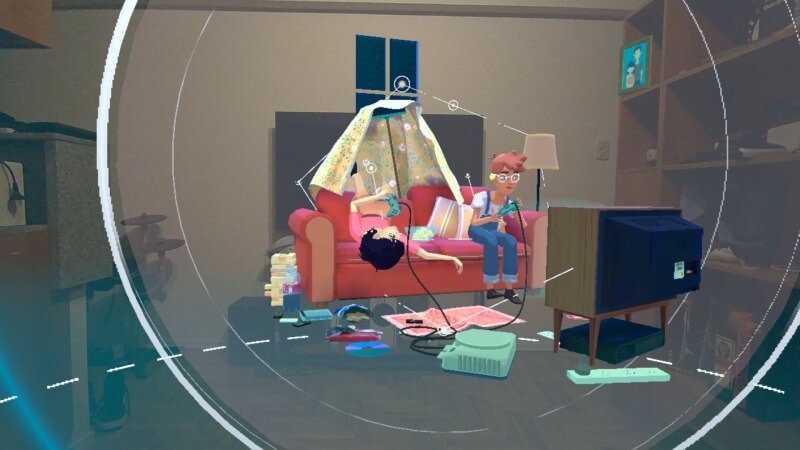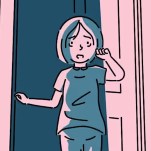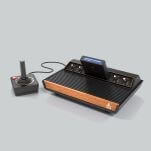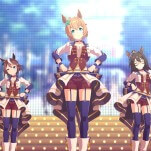Grasping The Ephemeral Analogue In Hidden Memories of the Gardens Between
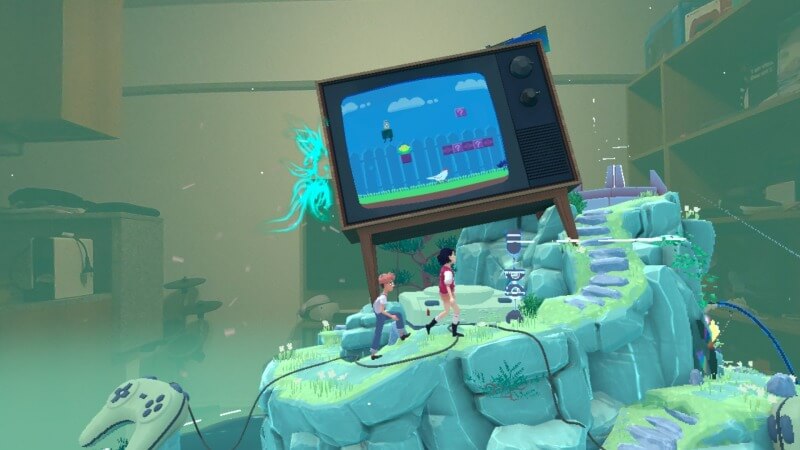
Every time I take off the headset from my face, I look at my hands. I push my fingers onto my palms to grasp my skin, and repeatedly clench my fist a few times. It’s a silly yet necessary reality-check moment after using them to navigate floating screens in my living room. It’s even more poignant after spending time inside Hidden Memories of the Gardens Between, where you’re surrounded by virtual dioramas built around analogue mementos.
Released this week for Meta headsets, this VR rendition of 2018’s The Gardens Between remains largely similar to the game I reviewed seven years ago. It’s a puzzle adventure that follows best friends Arina and Frendt, who sit down to reminisce about the childhood they spent together. The trip down memory lane is represented in a series of micro worlds, capturing an assortment of moments: building a house tree, watching movies under a blanket fort, repairing a bike. As the player, you move each world back and forth, rewinding time, as the characters follow set paths carrying a light inside a lantern from point A to B.
The minimalistic, tranquil ambiance is still present, but the context is different. Hidden Memories of the Gardens Between starts two decades later with Frendt finding Arina’s diary while moving house. This happens as he’s deciding which items from his attic to pack and which ones to donate. You see objects from his childhood—a kids’ synthesizer, a small tricycle—but also remnants of the person he was during the past few years. A tennis racket, trophies, two surfboards, a VHS tape. Each memento represents bygone moments and people, as well as the passage of time. Glancing at a phone next to the moving box where Frendt finds the diary, however, I saw a different underlying context—retreading my steps seven years later, now in virtual reality, these memories are a cautionary tale of the omnipresence of technology in our everyday lives.
You can play Hidden Memories of the Gardens Between traditionally, holding a controller in each hand, but this revision also supports hand tracking. Opting for the latter has you pinching your fingers in mid-air to grab the scene, and then moving sideways to rewind back and forth. There’s also an option for the perspective, one being closer and fully within the game, while the other is a step back, using mixed reality to display the entirety of the dioramas in front of you.
Sure, hand tracking is largely gimmicky and far from infallible. My hands kept getting stuck to the boundaries of each scene, and I accidentally pulled them toward my body and far away constantly. When you’re not interrupted by these issues and your mind can fully buy into the illusion, however, the magic effect of VR sets in. I grab a saw and move my arm to cut logs to rebuild the memory of a tree house. I get up from my couch to hammer in nails. I use a brush to temporarily paint the surfaces of the diorama as Frendt and Arina are frozen in place.
But my actions are all pre-programmed. I’m only afforded as much liberty as the devs intended the player to have. I might be using my hands, but these memories aren’t mine, nor do I have actual control over them. Arina doesn’t know it was me who manipulated time so she could repeatedly jump on top of a log stuck in a saw, applying enough force to split it and build a bridge. I can’t feel the tacticity of the remote when Frendt walks by and turns the TV on for a puzzle. No matter how hard Hidden Memories of the Gardens Between tries, my presence is superficial, and the analogue memorabilia escapes my grasp.
-

-

-

-

-

-

-

-

-

-

-

-

-

-

-

-

-

-

-

-

-

-

-

-

-

-

-

-

-

-

-

-

-

-

-

-

-

-

-

-

